Best Time to Visit Spain How to Pick the Perfect Month
Last updated on June 4th, 2025 at 07:18 pm
So there I was, standing outside the Guggenheim Museum in Bilbao at 7 AM, watching my breath fog up in the chilly October air. My cousin Jake was shivering next to me, complaining that I’d promised him “sunny Spain”—definitely not what you’d expect during the best time to visit Spain. Meanwhile, three hundred miles south in Málaga, my Instagram feed was blowing up with friends posting beach photos in perfect 26°C weather.
That’s when I realized something pretty important about Spain – it’s not just one country weather-wise. It’s like four different countries smooshed together, each with its own personality and quirks. And honestly? That early morning shiver in Bilbao taught me more about Spanish travel than any guidebook ever could.
See, I’d made the classic rookie mistake. I thought Spain = sunshine and heat, period. Boy, was I wrong. After seven trips across different seasons and plenty of weather-related mishaps, I’ve figured out there’s actually a perfect time to visit Spain for every type of traveler. The trick is matching your dreams with reality.
Let me share what I’ve learned the hard way, so you can skip the shivering-in-Bilbao experience and jump straight to your perfect Spanish moment.
Table of Contents
Best Time to Visit Spain Exploring Spain’s Four Weather Personalities
Here’s something that blew my mind when I finally figured it out: Spain basically has four completely different climates. Seriously, it’s like traveling through different countries without crossing borders.
The Mediterranean Coast is what most people picture – Barcelona down to Málaga. Hot, dry summers and mild winters. This is your postcard Spain, but even here, timing matters more than you’d think.
Central Spain (Madrid and surroundings) plays by different rules entirely. Scorching summers, freezing winters, and those shoulder seasons hit just right. Think extreme weather swings that’ll keep you guessing.
The Green North – Basque Country, Asturias, Galicia – might as well be a different planet. Cool, wet, lush, and honestly pretty similar to what you’d find in coastal Oregon or Ireland.
The Islands each do their own thing. Balearics follow Mediterranean patterns, while the Canaries basically said “screw seasons” and decided to be perfect year-round.
My Month-by-Month Reality Check
Spring Adventures (March-May): When Spain Wakes Up
March is Spain’s equivalent of that first cup of coffee in the morning – not quite awake yet, but getting there. Temperatures hover around 15-20°C, which sounds nice until you realize Spanish spring weather has serious mood swings. One day you’re in shorts, the next you’re hunting for your jacket.
I learned this during a March weekend in Valencia. Friday was gorgeous – shorts and t-shirt weather. Saturday brought rain and wind that had me buying an overpriced sweater from a tourist shop. Pack layers, trust me on this one.
April is when Spain really starts showing off. We’re talking 18-24°C of pure perfection, Easter processions that’ll give you goosebumps, and those first warm evenings perfect for outdoor dining. The only downside? Everyone else knows April’s great too, so popular spots start getting busy.


May might be the Goldilocks month – not too hot, not too cold, just right at 20-26°C. But here’s the catch: it’s also when Spanish students start planning their summer trips, locals begin their weekend escapes, and tourists realize winter’s finally over. Expect crowds and higher prices than March or April.
Spring essentials:
- Master the art of layering – Spanish weather loves surprises
- Easter week means higher prices and packed attractions
- Perfect walking weather makes this ideal for city exploration
- Shoulder season pricing still applies in March
Summer Reality Check (June-August): Choose Your Adventure Wisely
Let me paint you a picture of Spanish summer. It’s July, I’m standing in Madrid’s Retiro Park at 11 AM, and my phone shows 38°C. The locals? They’re all hiding indoors until evening. The tourists? Looking pretty miserable trudging around major sights.
But here’s where it gets interesting – that same week, my friend Emma was posting photos from San Sebastián where it was a perfect 24°C with ocean breezes. Spanish summer isn’t about avoiding the heat; it’s about choosing your location smartly.
June still plays nice with temperatures around 24-30°C. Long days, festival season kicking off, and coastal areas hitting their stride. This is when Spain’s energy really comes alive, especially along the coasts.
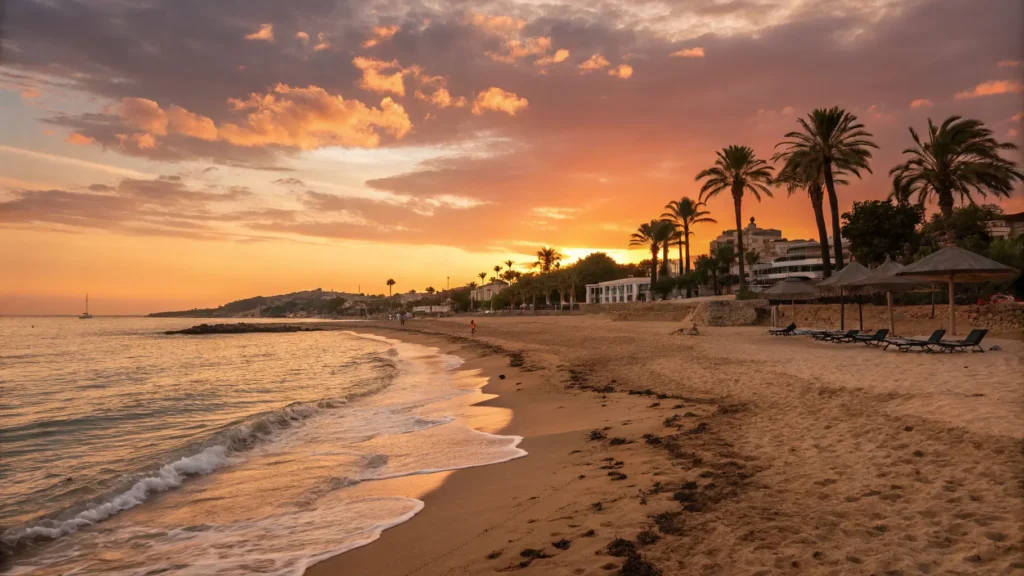

July and August – real talk time. Interior cities become furnaces. I’m talking 40°C+ in Seville, Córdoba, and even Madrid. But the coasts? Northern Spain? Mountain areas? They’re absolutely magical. The trick is knowing where to go and when to venture out.
Here’s what actually works in Spanish summer heat:
- Start your day early – I mean 8 AM early
- Embrace the siesta concept (everything closes 2-5 PM anyway)
- Evening activities become the highlight
- Coastal breezes are your best friend
Autumn Magic (September-November): Spain’s Best-Kept Secret
September 2023 changed my entire perspective on Spanish travel. I’d booked what I thought would be a “shoulder season” trip to Granada, expecting decent weather and fewer crowds. What I got was absolutely perfect 25°C days, golden hour light that photographers dream about, and this incredible energy as locals returned from their August vacations.
September delivers everything you want from Spanish weather – warm days, comfortable evenings, and way fewer crowds than summer. Plus, it’s harvest season in wine regions, which means festivals, fresh local produce, and some of the best food experiences you’ll find all year.
October keeps the good times rolling with temperatures around 18-25°C and arguably the most beautiful light Spain offers. I spent October 2022 walking the Camino, and the weather was so perfect I almost felt guilty posting photos.
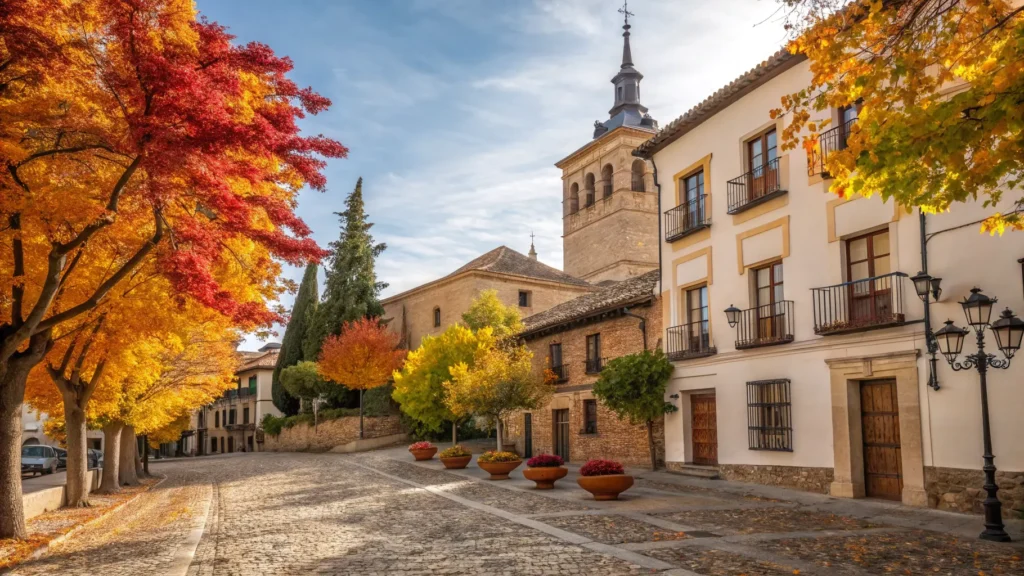

November gets cooler (12-20°C) but stays pleasant, especially in southern regions. Plus, this is when you start seeing serious savings on accommodations and flights.
Winter Surprises (December-February): Not What You’re Expecting
Everyone told me visiting Spain in winter was a mistake. They were dead wrong.
December 2022, I spent Christmas week in Granada and Seville. Temperature? A comfortable 15°C during the day. Crowds? Practically nonexistent at major attractions. Hotel prices? About half of what I’d paid for the same places in summer.
Watching sunrise over the Alhambra with maybe twenty other people instead of hundreds was worth every degree of temperature I gave up from summer visits.
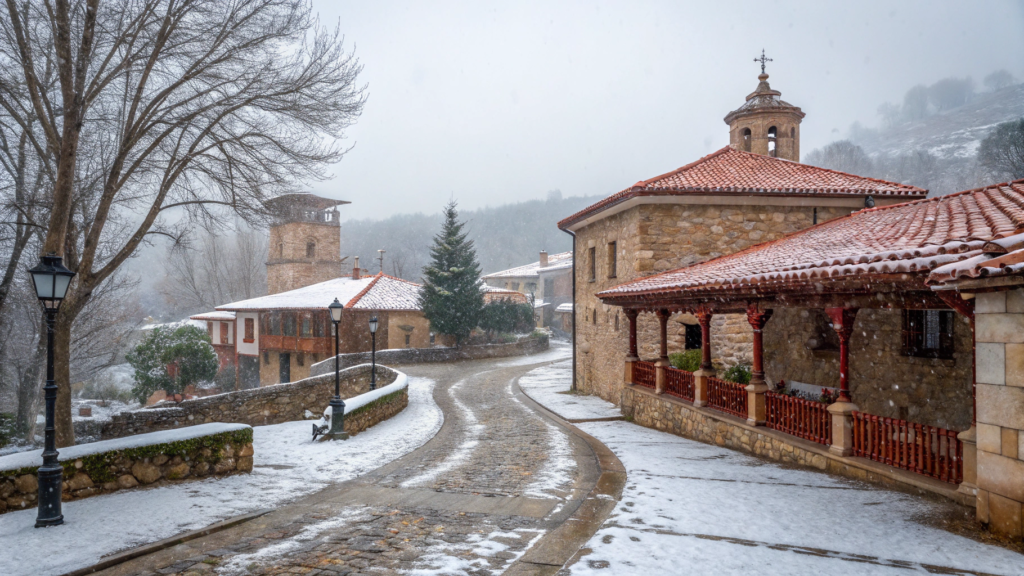

Winter in southern Spain or the Canaries can be absolutely lovely – think 15-22°C and actual breathing room at popular sites. Northern Spain gets properly cold and wet, but central heating and incredible cultural scenes make up for it.
Regional Timing Strategies That Actually Work
Andalusia: Respect the Heat
Southern Spain will test your heat tolerance. March through May and October through November are the sweet spots. I cannot overemphasize this enough – July and August in Seville or Córdoba aren’t just hot, they’re potentially dangerous if you’re not prepared.
My July experience in Córdoba involved ducking into every church, museum, and air-conditioned café I could find between 11 AM and 7 PM. Not exactly the romantic Spanish adventure I’d imagined.
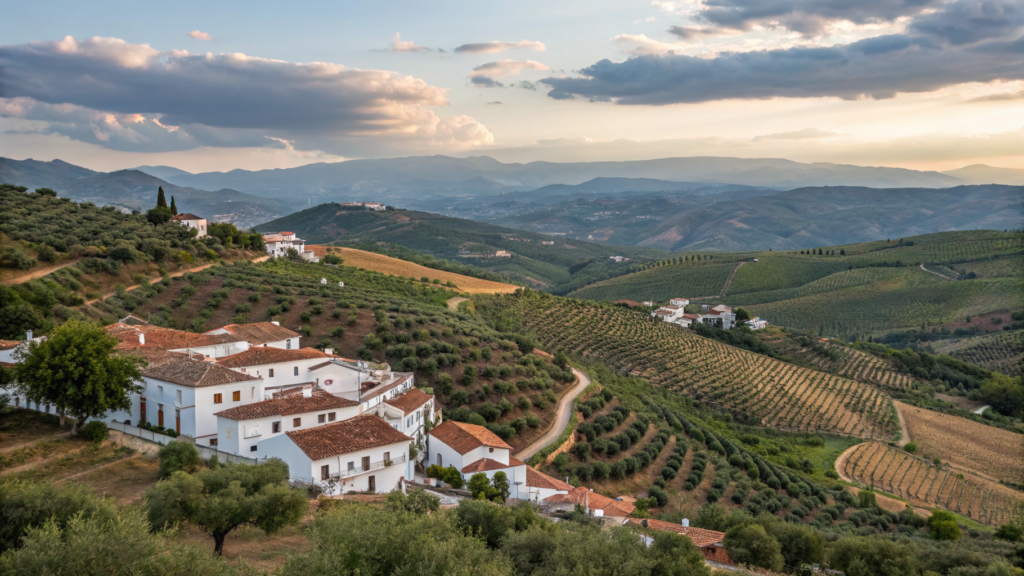

Barcelona and the Mediterranean Coast: Almost Always Works
Barcelona’s got this Mediterranean magic that makes it work almost year-round. May through October is prime time, but I’ve had fantastic winter visits too. The sea keeps temperatures moderate, and there’s always something cultural happening.
Pro tip I learned the hard way: avoid major conference weeks (Mobile World Congress in February, for example) unless you enjoy paying triple for hotels.
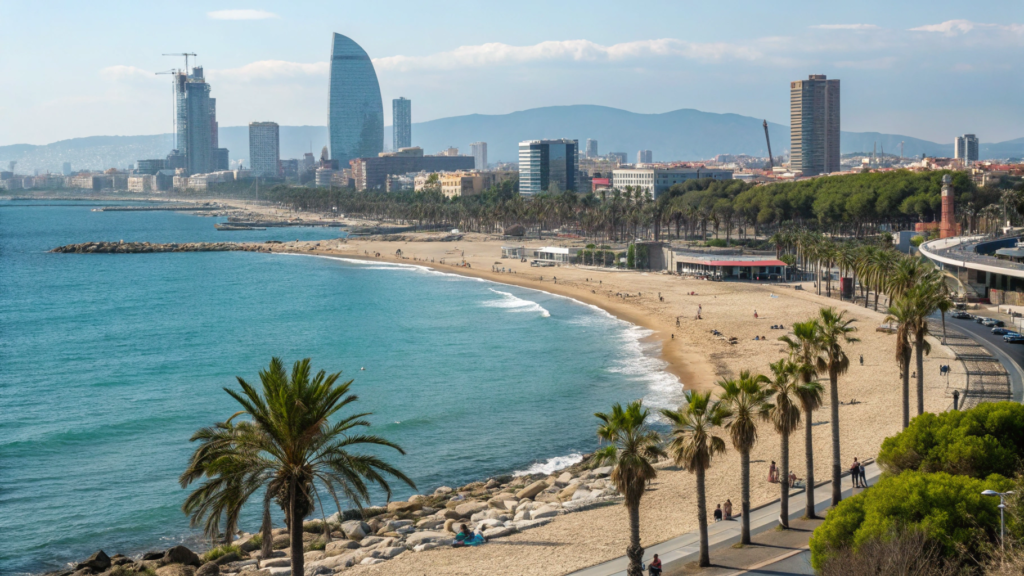

Madrid: Embrace the Extremes or Time it Right
Madrid gets brutal summers and surprisingly cold winters, but here’s what I discovered – both can be amazing if you adjust your expectations and activities. Summer means museum mornings and late-night tapas tours. Winter brings cozy café culture and incredible cultural programming.
Northern Spain: Summer or Bust
The Basque Country, Galicia, and Asturias follow different rules. June through September is really your only reliable bet for good weather. I spent five rainy days in Santiago de Compostela in March, and while the cathedral was incredible, I barely saw the city through all the drizzle.
Matching Your Travel Style with Spanish Seasons
Beach Lovers and Sun Worshippers
Ideal timing: June through September for guaranteed heat Regional picks: Costa del Sol works May through October, Balearics shine June-September, Canary Islands basically never disappoint
The Canaries are honestly like cheating at Spanish weather. I went to Tenerife in February expecting “decent,” and got 23°C sunshine every single day. If beach weather is non-negotiable, the Canaries deliver regardless of season.
History and Culture Enthusiasts
Perfect months: April-May, September-October
These temperatures are ideal for walking between monuments, museums stay fully operational, and you won’t be fighting extreme weather or crushing crowds. Summer heat makes outdoor historical sites pretty brutal, while winter can mean shortened hours and closures.
Food and Wine Adventurers
Peak season: September through November
Harvest time in Spanish wine country is absolutely magical. La Rioja, Priorat, and Ribera del Duero come alive with festivals, tastings, and seasonal menus. I timed a trip for October grape harvest in La Rioja, and the combination of perfect weather and incredible food experiences made it unforgettable.
Budget-Conscious Travelers
Money-saving months: January-February, November
We’re talking serious savings – sometimes 50-70% off peak season prices. January 2023, I found boutique hotels in Barcelona for €45/night that would cost €180 in summer. Weather might require some compromise, but your bank account will celebrate.
Outdoor Adventure Seekers
Optimal timing: April-June, September-October
Perfect for hiking, cycling, and outdoor exploration. Summer’s too intense for serious outdoor activities in most regions, while winter weather can be unpredictable in mountainous areas.
Hard-Earned Practical Wisdom
Booking Strategy by Season
Peak season planning: Book 4-6 months ahead for coastal areas and islands. I learned this when trying to find last-minute accommodations in San Sebastián during summer – everything decent was booked solid.
Shoulder season sweet spot: 2-3 months usually works, but watch for local festivals and events that can spike prices unexpectedly.
Off-season opportunities: Last-minute deals abound, but research which attractions and restaurants might be closed.
Packing Reality Check
Spring wisdom: Layers, layers, layers. Light rain jacket, comfortable walking shoes, and prepare for temperature swings.
Summer survival: Lightweight, breathable fabrics, serious sun protection (Spanish sun is no joke), comfortable sandals, and a light layer for air-conditioned spaces.
Autumn preparation: Similar to spring but with slightly warmer evening options.
Winter needs: Varies dramatically by region – research specific areas, but generally warm layers and waterproof options for northern regions.
Money-Saving Discoveries
Here’s something I stumbled onto by accident: many major museums offer free entry during specific hours. The Prado’s free from 6-8 PM daily, Reina Sofía on Saturday afternoons, and I’ve saved literally hundreds in entrance fees over the years.
Also, lunch menus (menú del día) are incredible value – typically €12-20 for three courses at restaurants that charge €50+ for dinner.
My Biggest Spanish Travel Mistakes
Epic fail #1: That August Seville disaster I mentioned. Learned to respect Spanish heat and plan accordingly.
Epic fail #2: Booking Barcelona during Mobile World Congress without checking. Hotel prices were astronomical. Always research local events first.
Epic fail #3: Packing only light clothes for March weather. Spanish spring is unpredictable – always bring layers.
Epic fail #4: Not researching restaurant closures in August. Half of Barcelona’s best spots were shut down for staff vacations.
The Real Answer: When Should YOU Go?
After all these trips, weather disasters, and perfect moments, here’s my honest recommendation:
First-timers: April-May or September-October deliver the classic Spanish experience with manageable weather and crowds.
Beach seekers: June-September for guaranteed sun, Canary Islands for year-round reliability.
Budget travelers: January-February for maximum savings, November for decent weather and good deals.
Culture lovers: April-May, September-October for perfect museum and monument weather.
Outdoor enthusiasts: April-June, September-October for hiking and adventure activities.
Honestly? I’ve never had a completely terrible trip to Spain – just trips that could’ve been even better with smarter timing. This country delivers something special every single month.
Your Spanish Adventure Awaits
Spain’s calling, and now you’ve got the inside scoop on timing it perfectly. Whether you’re dreaming of perfect spring temperatures in Granada, summer beach days in Valencia, autumn harvest experiences in La Rioja, or winter sunshine in the Canaries, there’s an ideal month waiting for your Spanish story.
What’s drawing you to Spain? The food, the history, the beaches, the culture? And which season sounds perfect for your dream trip? Share your Spanish travel plans in the comments – I love helping people avoid my weather-related mistakes and find their perfect Spanish moment!








3 Comments